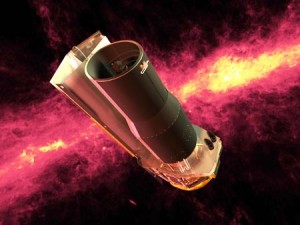SATURDAY, 18 DECEMBER 2010
Launched by NASA in 2003, Spitzer is a space-borne infrared telescope able to probe into the far reaches of our universe. The recent data it has provided concerning Wasp 12b adds to that already gathered by Earth-based astronomers and has enabled scientists to find out more about the planet’s composition and surface conditions.In a letter to Nature, a multinational team headed by Nikku Madhusudhan, have presented their findings. The ratio of carbon to oxygen in the atmosphere is often used by astronomers to assess planetary conditions. They report that whilst our sun has a carbon to oxygen ratio of around 0.5, an unprecedentedly high ratio of greater than 1 was found in the atmosphere of Wasp 12b.
Although Wasp 12b has thick gaseous surface layers, the findings have led to speculation about its core structure. Madhusudhan has suggested that with high carbon and depleted oxygen, the planet is more likely to have a “carbide or diamond interior rather than the silicate geology of the Earth.” It has been suggested that Wasp 12b may also contain exotic forms of carbon that don’t exist on our planet. The possibility of finding carbon-rich rocky planets elsewhere in the galaxy has even sparked talk of mountain ranges made of diamond.
However, scientists are still faced with a huge challenge to try to understand the physics and chemistry of conditions that cannot be replicated on the Earth. Wasp 12b presents an opportunity to further investigate the science of extreme planetary conditions.
Written by Helen Gaffney

